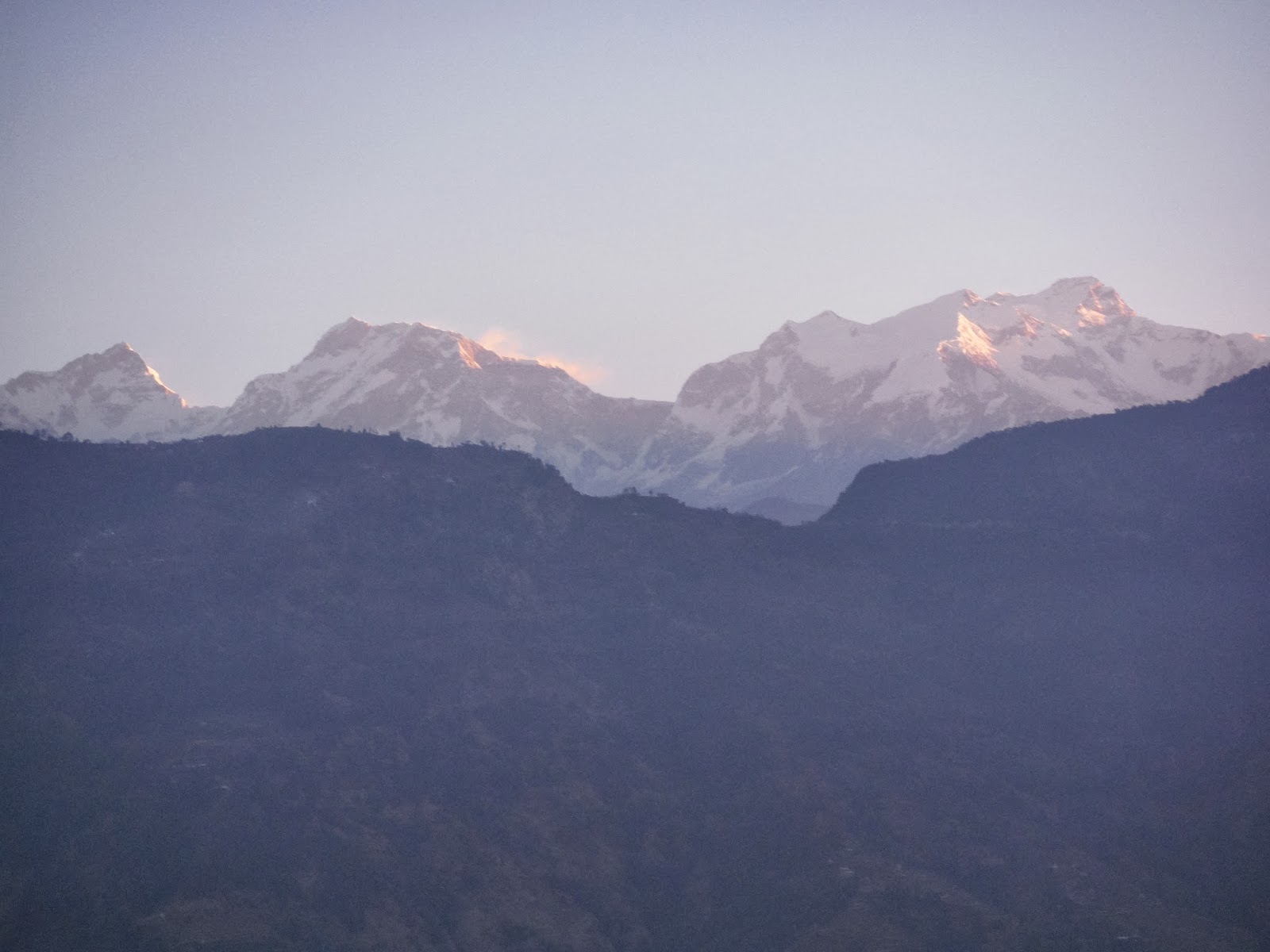Someone I work with knew of a vacant flat
above the premises of Lamjung Radio, so after a quick look I agreed to rent it.
It comprises of kitchen/living room, two bedrooms (one very small) and a
bathroom. One of the best things about
it is the large balcony that I will certainly make use of when the weather
warms up again. The landlord kindly had the whole flat painted before I moved
in, which meant that it looks clean too.
 |
| Living room |
 |
| Kitchen alcove |
The flat is about five minutes walk from
the main street of Besisahar, along a gravel track. There is a school nearby,
small shops and other houses along the road.
Behind the flat the ground rises steeply and so at the back I look out
onto terraces planted with vegetables and just a few isolated houses. Behind that are the forested hills with a
deep river valley cutting through between them to the east.
The first problem was actually moving all
my things across town. (I seem to have acquired a lot of things since I arrived
in Nepal with just a rucksack and a bag!!) I had two large and heavy bags
stored at the offices, which were transported up the hill to the flat by a man
living nearby, at 8am before he went to work. He attached them both to a strap
across his head and carried them on his back. A small but very strong man and
it cost me the equivalent of £2!
Next I paid off the hotel bill, and asked
the receptionist about transporting my other bags. Could they find me a taxi? No! The next thing I knew, two of the staff
were sat astride a motorbike, with my two bags somehow balanced between them.
When I arrived at the flat, 10 minutes walk from the hotel, the bags were in my
room.
 |
| Spacious balcony |
 |
| Vegetables terraces behind the flat |
One important job was to buy furniture and
household necessities in order to set up home. I had forgotten just how many
things are needed. It was also quite difficult
as many things I didn’t know the Nepali name for, about the expected quality or
what was a reasonable sum to pay.
Camille, the wife of the Lamjung GAN
manager, kindly offered to help me. I
sat in the small store whilst she bargained for my mattress and bedding and then, in another shop, for a two-ring gas cooker and all the fitments for it. The gas container we bought in a small provisions
store opposite my flat and the friendly shopkeeper spent time, later that
afternoon fitting, it all together for me.
The landlord and his wife, who at present
live in the flat below mine, were anxious to help too. They were very concerned that I had no
curtains and, just as it got dark, arrived with some old ones and the wires to
hang them, so I had bedroom curtains ready for the night.
It did seem strange to settle down for the
night in a new place so completely different from my home in UK. The place doesn’t as yet feel like mine, as
I’m still living out of suitcases – I’ve yet to buy a cupboard to store my
clothes in!



























